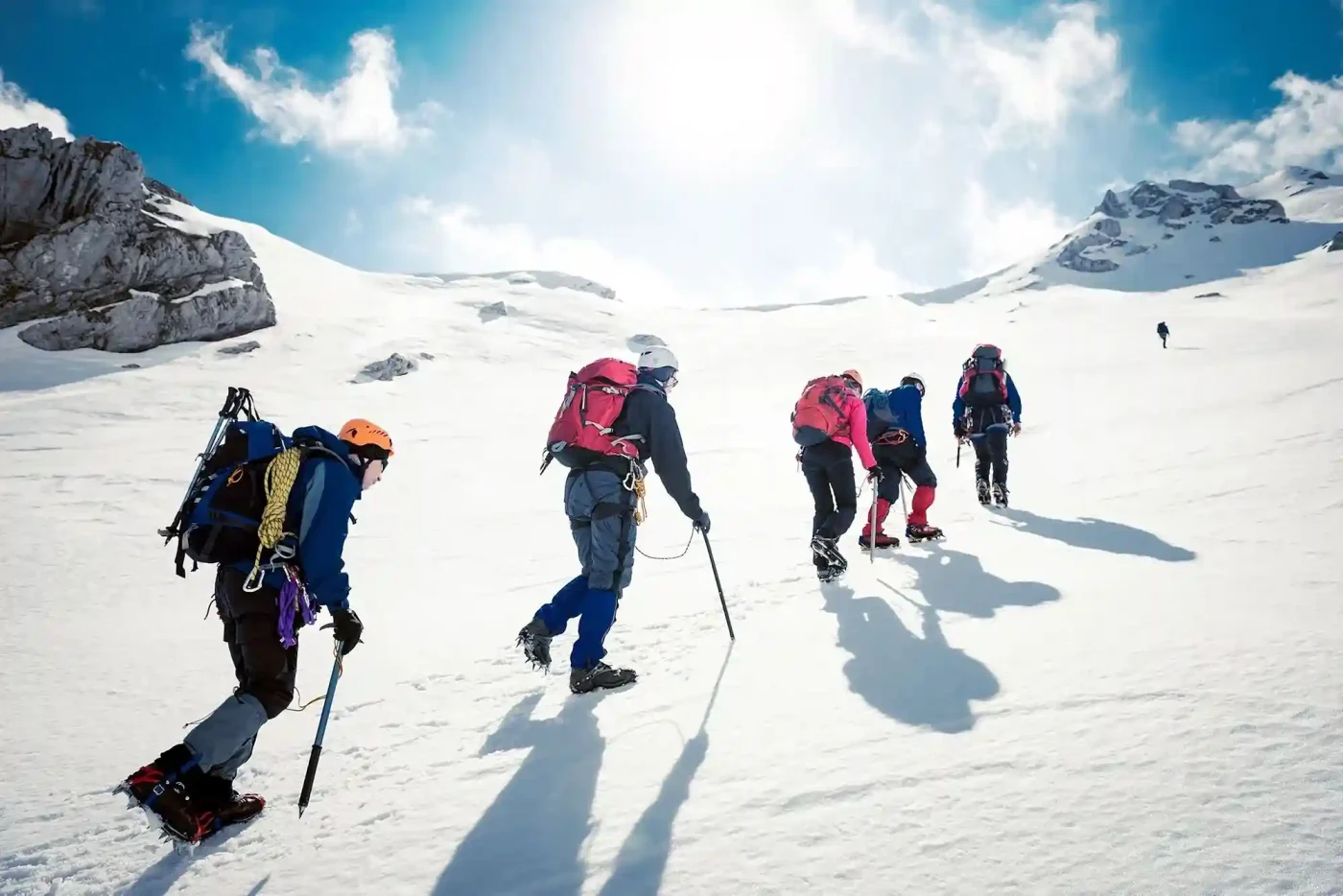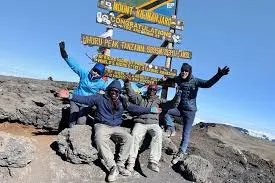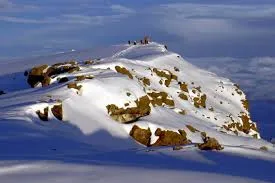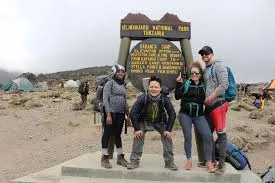How Safe Is It to Climb Kilimanjaro?
Climbing Kilimanjaro is considered safe for most trekkers when the climb is well-planned, guided by experienced professionals, and paced properly for acclimatization. The main challenge is altitude, so gradual ascent, adequate hydration, and listening to your body are key to minimizing risks. Reliable operators provide trained guides, medical checks, and evacuation support to ensure your well-being on the mountain. Below is a clear overview of safety considerations to help you understand the risks and precautions for a successful Kilimanjaro climb with Capable Africa Tours.
Plan Your Safe Kilimanjaro Trek
Is Climbing Kilimanjaro Safe?
Climbing Kilimanjaro is generally safe when approached with proper preparation, the right gear, and guidance from experienced professionals. The main risks come from altitude sickness, fatigue, and changing weather conditions, but these can be managed by pacing yourself, staying hydrated, and allowing time to acclimatize. Capable Africa Tours prioritizes safety through experienced guides, proper acclimatization, and emergency protocols. While the mountain presents challenges like altitude sickness, extreme weather, and physical demands, these risks are manageable with preparation. Capable Africa Tours achieves a 95% safe descent rate, thanks to our rigorous safety standards and expert team. Below, we explore the key factors that make Kilimanjaro a safe adventure.
Key Safety Highlights
- Experienced Guides: 1 guide per 2 climbers, trained in altitude sickness and emergency response.
- Acclimatization: Longer routes (7–8 days) like Lemosho reduce altitude sickness risk by 30–40%.
- Emergency Equipment: Oxygen tanks, pulse oximeters, and first aid kits on every trek.
- Low Fatality Rate: Only 0.01–0.03% (10–30 deaths per 100,000 climbers), per industry data.
- Daily Health Checks: Monitoring of oxygen levels and symptoms to catch issues early.
Main Risks of Climbing Kilimanjaro
Climbing Kilimanjaro is a rewarding adventure, but it comes with risks that trekkers should prepare for. The most common is altitude sickness, which can affect anyone regardless of fitness level. Other risks include dehydration, hypothermia from rapidly changing mountain weather, slips or falls on steep trails, and fatigue from long trekking hours. With proper preparation, guidance, and awareness, most risks can be managed effectively. Below is a clear overview of the main risks you should know before starting your 6–9 day trek with Capable Africa Tours.
1. Altitude Sickness (AMS)
Acute Mountain Sickness affects about 50% of climbers, with symptoms like headaches, nausea, and fatigue. Severe cases (HAPE/HACE) are rare (<2%). Capable Africa Tours uses longer routes like Lemosho for gradual ascent, reducing AMS risk by 30–40%. Daily pulse oximeter checks and Diamox (optional) further enhance safety.
2. Slips and Falls
Rocky trails and loose scree, especially on summit night, can cause slips. Our guides teach proper footing techniques, and we recommend trekking poles and sturdy boots to minimize this risk.
3. Extreme Weather
Temperatures can drop to -15°C on summit night, with potential for rain or snow. Capable Africa Tours provides gear rental options and advises on layering to stay warm and dry.
4. Physical Fatigue
Long hiking days (6–8 hours) require stamina. Pre-trek training plans from Capable Africa Tours build endurance, ensuring you’re ready for the challenge.
Risk Statistics
| Risk | Occurrence Rate | Mitigation by Capable Africa Tours |
|---|---|---|
| Altitude Sickness (AMS) | 50% (mild), <2% (severe) | Longer routes, daily health checks, Diamox |
| Slips/Falls | 5–10% (minor injuries) | Trekking poles, guide training, quality boots |
| Extreme Weather Issues | 10–15% (discomfort) | Weather-appropriate gear, rental options |
| Fatigue-Related Issues | 20–30% | Pre-trek training, pacing guidance |
Safety Measures with Capable Africa Tours
Your safety on Kilimanjaro begins with careful preparation and the right guidance. Always follow your guide’s instructions, pace yourself to prevent altitude sickness, and never push beyond your limits. Use proper gear such as sturdy boots, layered clothing, and reliable headlamps to stay protected in changing mountain conditions. Keep hydrated, eat well, and get enough rest to maintain strength during the climb. Below are the key safety measures we prioritize to ensure a secure and successful Kilimanjaro trek with Capable Africa Tours.
- Expert Guides: Certified guides with wilderness first aid training, 1 per 2 climbers.
- Health Monitoring: Daily checks with pulse oximeters to track oxygen levels and heart rate.
- Emergency Equipment: Oxygen tanks, first aid kits, and satellite phones on every trek.
- Evacuation Plans: Pre-arranged routes and stretcher availability for rapid descent if needed.
- High-Quality Gear: Well-maintained tents, sleeping pads, and rental options for summit-ready equipment.
- Route Selection: Preference for longer routes (e.g., 8-day Lemosho) for better acclimatization.
Our safety measures result in a 95% safe descent rate, making Capable Africa Tours a trusted choice for Kilimanjaro treks.
See Safety in Action on Kilimanjaro
Watch how Capable Africa Tours ensures a safe Kilimanjaro climb with expert guides, daily health checks, and top-notch equipment in this video.
How to Prepare for a Safe Kilimanjaro Climb
To prepare safely for Kilimanjaro, start with proper physical training that builds endurance, strength, and cardio fitness. Acclimatize gradually by choosing an itinerary with enough days to adjust to altitude, and always listen to your body for warning signs of altitude sickness. Pack essential safety gear such as a first aid kit, headlamp, and reliable trekking poles. Stay hydrated, eat balanced meals, and follow your guide’s instructions closely throughout the climb. Below is a comprehensive set of safety preparation tips to ensure your 6–9 day trek with Capable Africa Tours is both secure and successful.
Physical Preparation
- Cardio Training: Run, cycle, or swim 4–5 times weekly for 45–60 minutes to build endurance.
- Strength Workouts: Focus on squats, lunges, and core exercises for steep terrain.
- Practice Hikes: Train with a 5–7 kg daypack on hilly trails to mimic trek conditions.
- Altitude Prep: If possible, hike above 2,500 m or use altitude simulation gear.
Gear Preparation
- Layering: Merino wool base layers, fleece mid-layers, and Gore-Tex outer layers.
- Footwear: Waterproof, broken-in hiking boots with good ankle support.
- Essentials: Trekking poles, 3L water bladder, headlamp, and a -15°C sleeping bag.
- Rentals: Save luggage space with Capable Africa Tours’ gear rentals (e.g., jackets, sleeping bags).
Mental Preparation
Stay positive, pace yourself, and trust your guides. Capable Africa Tours provides pre-trek briefings to boost confidence and clarify expectations.
Success Rates and Safety Statistics
Kilimanjaro’s summit success rate varies by route and operator. With Capable Africa Tours, our 8-day routes achieve an 85–90% summit success rate due to better acclimatization. Safety-wise, our treks boast a 95% safe descent rate. Here’s a breakdown:
| Metric | Value |
|---|---|
| Summit Success Rate (8-day routes) | 85–90% |
| Safe Descent Rate | 95% |
| Fatality Rate | 0.01–0.03% (10–30 per 100,000) |
| Altitude Sickness (Mild) | 50% |
| Altitude Sickness (Severe) | <2% |
Best Routes for a Safe Kilimanjaro Climb
For a safe Kilimanjaro climb, the Marangu Route is popular for its gradual ascent and huts along the way, making it beginner-friendly. Machame Route offers scenic views with a slightly more challenging trek. Lemosho and Rongai Routes are quieter, giving more time for acclimatization and reducing altitude sickness risk. Always go slow, stay hydrated, and choose a guided tour for safety. Below is an overview of the best Kilimanjaro routes to help you plan a safe and successful trek with Capable Africa Tours.
| Route | Duration | Success Rate | Safety Features |
|---|---|---|---|
| Lemosho | 7–8 days | 85–90% | Gradual ascent, low crowds, scenic |
| Machame | 6–7 days | 80–85% | Moderate crowds, good acclimatization |
| Marangu | 5–6 days | 60–70% | Hut-based, shorter but steeper |
| Rongai | 6–7 days | 75–80% | Remote, gradual ascent, less scenic |
Ready for a Safe Kilimanjaro Adventure?
Climb Kilimanjaro with confidence alongside Capable Africa Tours. Our expert guides, robust safety measures, and 95% safe descent rate ensure a secure journey to Uhuru Peak. Book now for a safe, unforgettable adventure!
- 95% safe descent rate with expert guides
- Longer routes for better acclimatization
- Comprehensive safety equipment included
- Gear rentals for hassle-free preparation
- Customizable treks for all fitness levels
Limited spots for safe Kilimanjaro treks — book now with Capable Africa Tours!
Plan Your Trek Now


